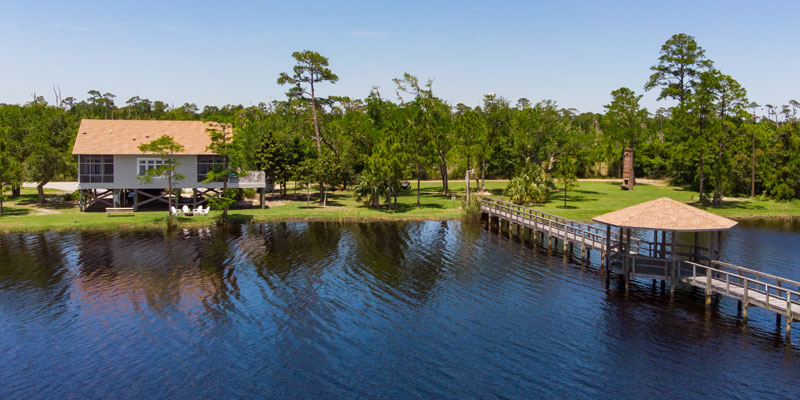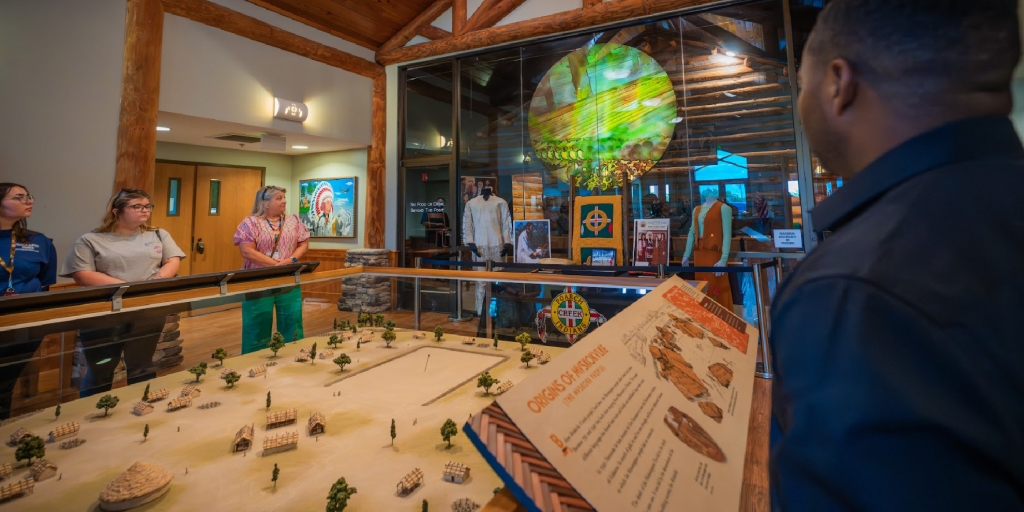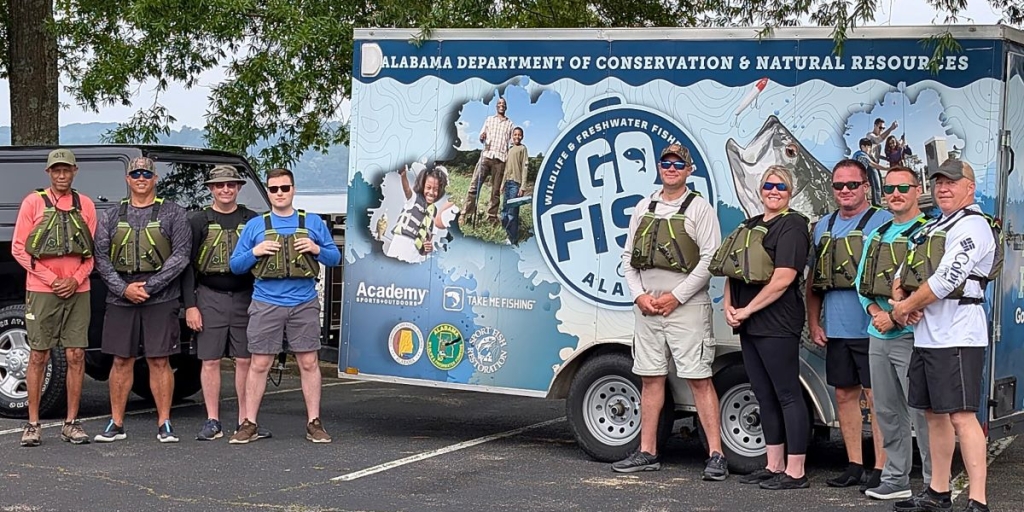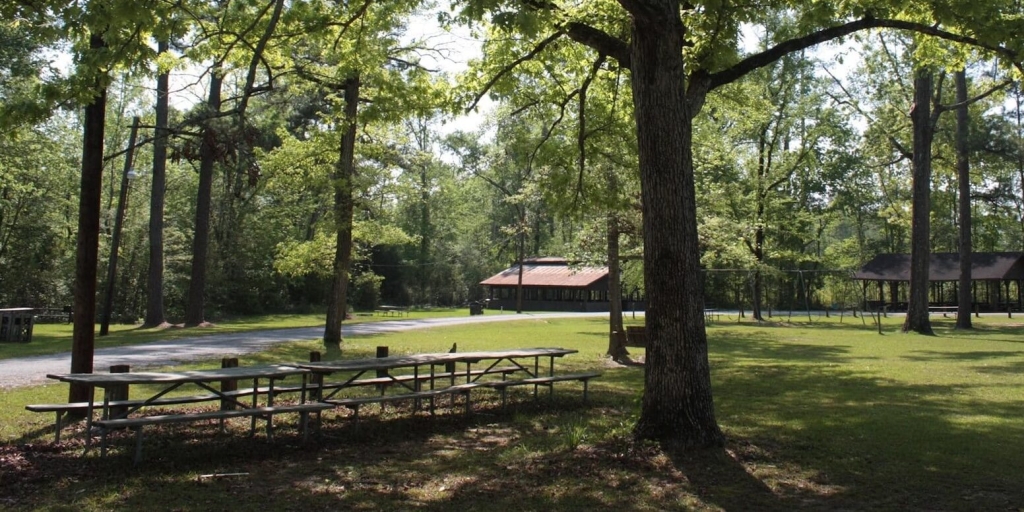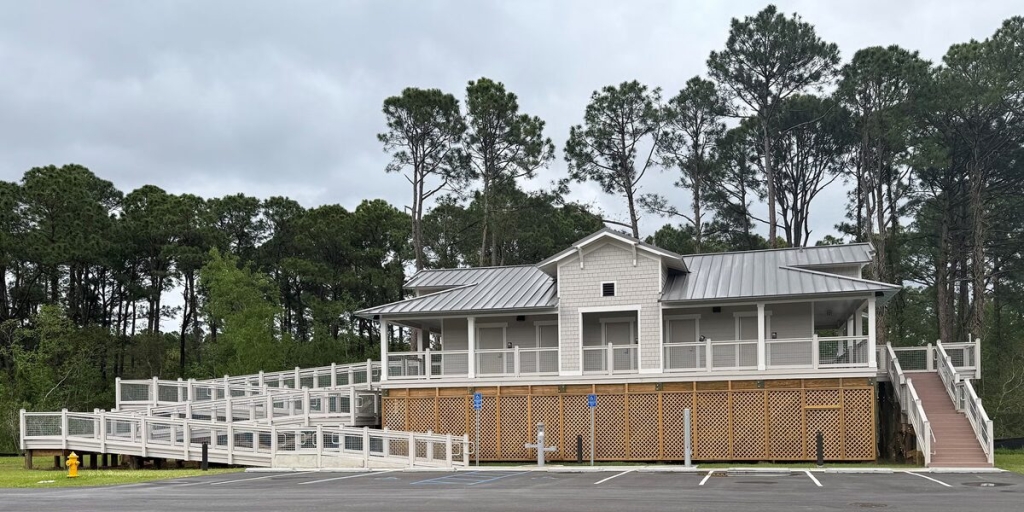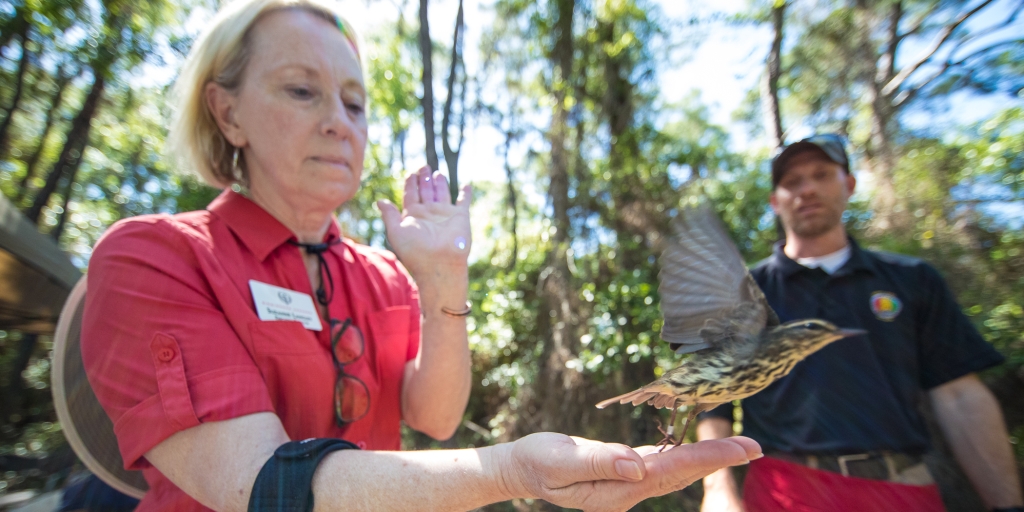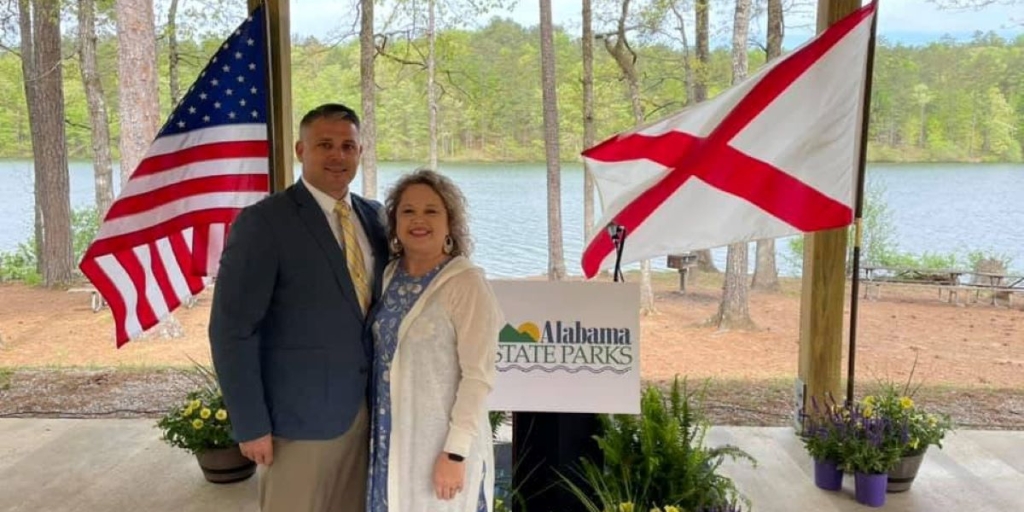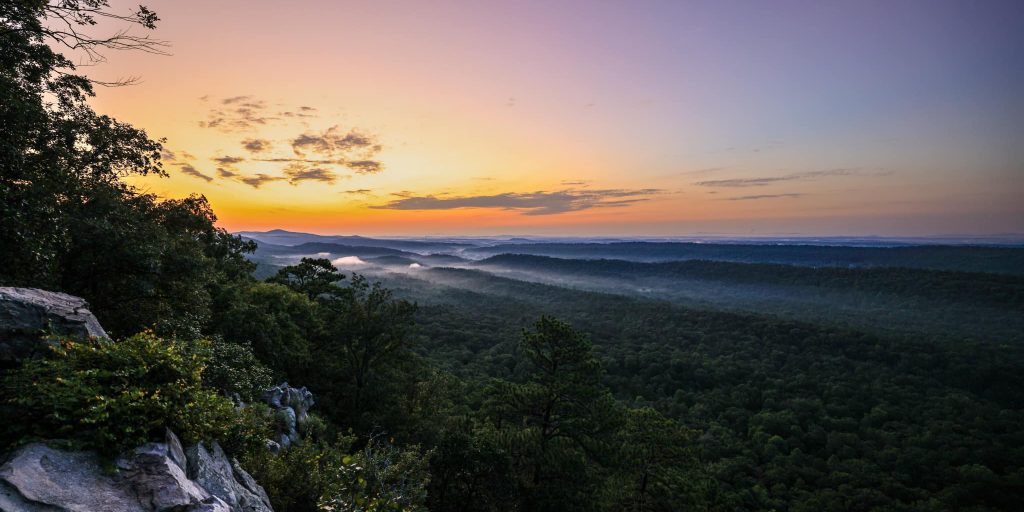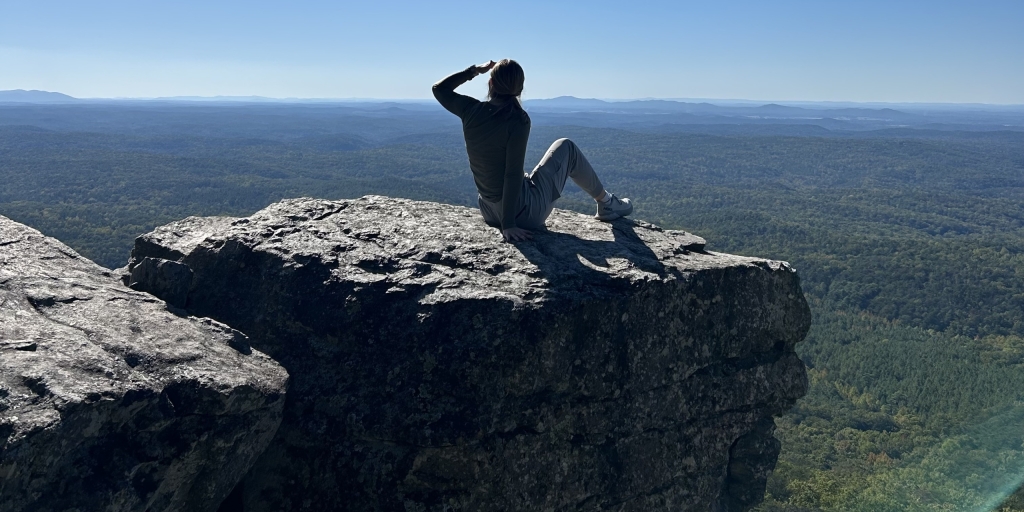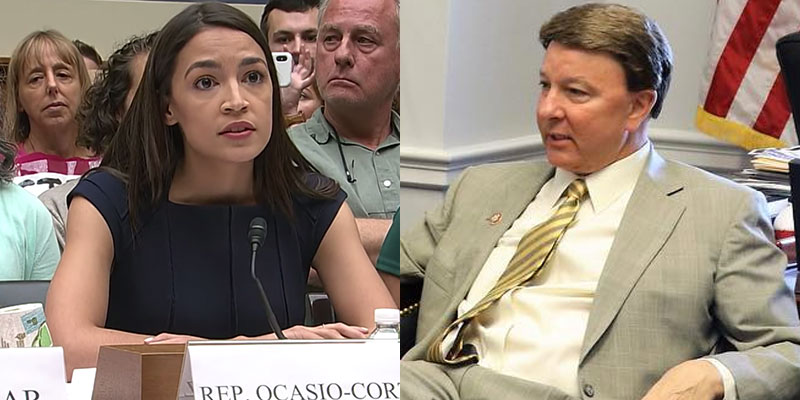During his career, Dan Hendricks has seen first-hand the impact charitable foundations can have on a wide range of organizations.
Retiring to picturesque Florence, Ala., after a long academic career with a final stop at the University of North Alabama, Hendricks channeled his love of the outdoors and nature toward one of our state’s greatest treasures – the Alabama State Parks System.
With an extensive background in foundation work, Hendricks led a coalition of like-minded individuals to form the Alabama State Parks Foundation, which was officially launched at Oak Mountain State Park this past spring.
“I noticed when I was planning for retirement that Alabama didn’t have a state parks foundation, and they had a beautiful state parks system,” Hendricks said. “My wife (Barb) and I love to be outside hiking. We love gardens and learning about nature. As I was planning retirement, I thought of how I was going to be of use to the community, because I was going to have a lot more time. I also noticed that there were very few states where the parks didn’t have a foundation.”
Shortly after his retirement became official, Hendricks traveled to nearby Joe Wheeler State Park near Rogersville, Ala., and visited with Chad Davis, Northwest District and Wheeler park superintendent. That eventually led to meetings with State Parks North Region Supervisor Tim Haney and State Parks Director Greg Lein.
“I told Chad that state parks might need a foundation, and I shared my background in running foundations,” Hendricks said. “He showed interest, so I ended up meeting with Tim Haney and Greg Lein.”
Hendricks said in 2017 a design team was formed to determine the objectives of the foundation and work out requirements to reach those goals.
“One thing we wanted was a geographically disbursed state board so that all parts of the state would be represented,” Hendricks said. “We tried to identify strategic goals. One goal was to be able to mobilize park people and create a kind of park movement in the state. It was not necessarily that they would learn anything new, but they would realize something they already knew – that the state parks were a wonderful treasure for the state, and that other states had foundations that were important private-public partners with the state parks systems.”
Hendricks studied the Iowa State Parks Foundation and how it dealt with the continuing need for strong funding that makes parks sustainable, along with private-public partnerships that complement state funding.
“That is particularly important for Alabama, because the state parks system doesn’t receive much support from state revenue,” Hendricks said. “It is mostly a fee-based system, so parks are run almost like independent businesses. They rely on good business practices and fees for revenue.”
Hendricks said the Iowa Foundation developed a model to divide the state into regional cluster groups with one or more parks that highlight that particular region.
For example, among Alabama’s 21 state parks, Joe Wheeler, DeSoto and Monte Sano would represent north Alabama; Lurleen Wallace, the west; Rickwood Caverns and Oak Mountain, the Birmingham area; Cheaha, Guntersville and Cathedral Caverns, the east; and Lakepoint and Gulf State Park, the south.
“What we’re going to do is try to create working groups for each of these zones, focused on one or more of the parks in that zone,” Hendricks said. “Then we are going to invite municipalities, individuals, businesses and corporations that have the most interest in that particular park. Then we want to identify ways we can drastically improve the infrastructure of the parks to do two things – increase the number of people the parks are serving and create sustaining sources of revenue. One of the things that the research done by the Iowa foundation revealed is that cabin and primitive camping and recreational vehicle (RV) camping are services that can increase the number of people and, at the same time, generate additional income.”
Hendricks said Iowa is trying to mobilize businesses, individuals and municipalities to build cabins and amenities for their parks.
“To do that, they are emphasizing how important the parks are for quality of life, elevate the value of communities, provide recreational services for all Alabamians in our case, and they attract individuals,” he said. “If you have a great park in America, people are attracted to those recreational amenities.”
Lein, who has been State Parks Director since 2012, said the work of the Foundation will contribute to the ongoing success of the state’s treasured parks, which continue a current winning streak. Alabama State Parks earned a record 18 Certificate of Excellence Awards from TripAdvisor.com in 2019, and the Eagle Cottages at Gulf State Park were deemed one of National Geographic’s Unique Lodges of the World.
“Dr. Hendricks has done a great job of researching the different foundation models that exist across the country and marrying that to how Alabama’s park system operates,” Lein said. “We are especially optimistic about the vision that he and other Board members share in pursuing financial support from other foundations and corporate entities who share our desire to make the parks better for the people. While we have made great strides in addressing the park’s maintenance backlog, we hope that financial support through the Foundation can lead to creating new programs, features and amenities within the parks. These are such positive times for the park system, and we are excited about having the Foundation as a new park partner.”
The Alabama State Parks Foundation officially launched at Oak Mountain State Park for a specific reason.
“The launch was to invite people to become part of a great parks movement in Alabama,” Hendricks said. “Like I said, it was not necessarily to redo their experience, but to simply say let’s join together to not only to preserve this wonderful natural treasure, but let’s see if we can actually expand it and make it better. From the kickoff, we’ve been able to identify people who have become First Friends and founding members of the Foundation. I think we have between 350 and 370 individuals who said they would like to do that. I was encouraged by that. Almost half of that number also have made gifts.”
The Alabama State Parks Foundation board meets four times a year with the next meeting scheduled for July to develop a corporate partners program to recruit charitable investors to help improve and expand the infrastructure so state parks can serve more people.
Hendricks, who was the Vice President for University Enhancement at the University of North Alabama before he retired, has extensive foundation experience. He was vice president at the LSU Foundation, VP and executive officer at Western Illinois University, director and chief operations officer for The Campaign for the University of Kentucky, and director of planned giving for Hanover College.
He has also been active in the Audubon Society in Kentucky and Indiana as well as serving as president of the Baton Rouge Audubon Society.
Hendricks said the geographical diversity he’s experienced during his career has given him a perspective on how the various state parks he’s visited are operated and cherished by the communities.
“Running three foundations also has helped,” he said. “I understand how they work and hopefully ways to make them successful. But it’s always difficult to start something new. Something in the charitable world is even more difficult. A lot of people have to be convinced something is valuable enough. So, we spend a lot of time thinking about how to start that park movement and inviting people to be a part of it. Historically, the formation of the parks in Alabama is fascinating. A lot of the parks were built by the Civilian Conservation Corps (CCC) during the Depression. In my speech when we kicked off the Foundation, I said we are also creating this Foundation as a tribute to the young men who built it in the 1930s and who left this as a legacy for us and the six or seven generations who have used those parks since they were built. We want to continue to leave a legacy for our children and their children.”
David Rainer is an award-winning writer who has covered Alabama’s great outdoors for 25 years. The former outdoors editor at the Mobile Press-Register, he writes for Outdoor Alabama, the website of the Alabama Department of Conservation and Natural Resources.




